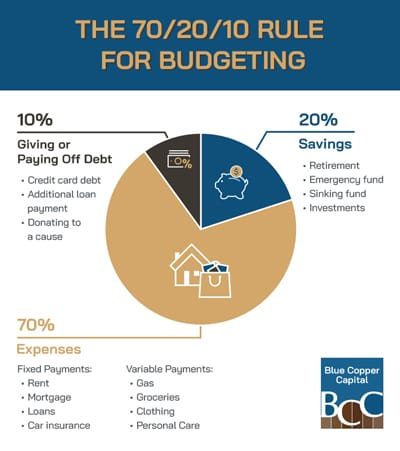
Achieving financial freedom is a top goal for many small business owners. This guide will walk you through actionable money-saving tips, retirement planning insights, and strategies for debt-free living. By following these proven methods, you’ll be equipped to manage finances efficiently, boost savings, and set your business up for long-term success.
In This Post,
- Money-Saving Tips and Tricks
- Retirement Planning Tips for Entrepreneurs
- Using Credit Cards Wisely
- Strategies for Debt-Free Living
- Conclusion
- Financial Freedom FAQs
Money-Saving Tips and Tricks for Small Business Owners
1. Never spend more than you make
- Financial Challenges: Make decisions within your means to avoid future stress.
- Social Pressure: Don’t let others dictate your spending. Focus on your personal goals.
- Lifestyle Creep: Watch for expenses that rise as income grows.
2. Stay Within Your Means
Spending less than you make is crucial to maintaining a healthy cash flow for your business. Prioritize decisions that align with your business goals and avoid overspending due to social pressures or lifestyle creep.
Questions to Consider:
- Are your purchases supporting long-term financial goals?
- Are you staying on track to become debt-free?
3. Learn More: Living Within Your Means
4. Focus on Operational Efficiency
Optimize your spending by reducing waste and automating repetitive tasks. Implementing smart operational practices can reduce expenses and increase profits.
Visual Aid Suggestion: Decision Tree for Financial Challenges
An interactive decision tree that helps readers assess social pressure, emotional spending, and lifestyle creep.
➡️Learn more Living Within Your Means: What It Is & How to Do It | Thrivent
Retirement Planning Tips for Entrepreneurs
Without traditional retirement plans, small business owners need to build a customized retirement strategy. Here are essential areas to focus on:
- Budgeting: Track income, expenses, and set goals.
- Emergency Fund: Save at least 3-6 months of personal and business expenses.
- Investments: Diversify assets to grow your wealth over time.
- Insurance: Protect your assets with appropriate coverage.
➡️Visit: Retirement Planning Basics for Small Business Owners
Using Credit Cards Wisely for Financial Benefits
Credit cards can be valuable financial tools when used responsibly. Here’s how:
Pros:
- Rewards: Earn points or cash back for business expenses.
- Flexible APR: Adjustable rates based on your credit score.
- Sign-Up Bonuses: Get rewarded with incentives for opening new accounts.
Cons:
- Fees: Be cautious of late, transaction, and penalty fees that can accumulate.
Read More: Understanding Credit Card Pros and Cons
Strategies for Debt-Free Living
Developing solid financial habits is essential for achieving and maintaining a debt-free life:
- Create a Budget: Allocate income toward essentials, savings, and investment.
- Emergency Fund: Helps manage unexpected costs without adding debt.
- Prioritize High-Interest Debt: Focus on paying down debts with high-interest rates first.
- Employer Benefits: Take advantage of any matching retirement contributions if you employ others.
➡️Read More: Debt-Free Living for Small Business Owners
Budgeting Approaches for Small Business Owners
The 70-20-10 Rule
- 70%: Essentials
- 20%: Savings
- 10%: Debt or investments
Divide income into 70% for essentials, 20% for savings, and 10% for debts or investments. This method provides balance by meeting essentials, allowing enjoyment, and ensuring future security.

The 50-30-20 Rule
- 50%: Needs
- 30%: Wants
- 20%: Savings
Divide income into 50% for needs, 30% for wants, and 20% for savings. This method provides balance by meeting essentials, allowing enjoyment, and ensuring future security.

Visual Aid Suggestion: Comparison Chart of Budgeting Rules
A bar chart comparing 70-20-10 and 50-30-20 budgeting rules, illustrating how each rule allocates income.
➡️Learn more from this website: The 70/20/10 Rule for Budgeting | Calgary, AB | Edmonton | BC
➡️Visit this website: The 50/30/20 Budget Rule Explained With Examples
Conclusion
Achieving financial freedom is a journey, but with consistent effort and the right strategies, you can build a secure financial future. By following these tips, you’re taking proactive steps toward effective money management and long-term financial stability.
These tips and visual aids can provide a framework for readers aiming to enhance their financial habits. Remember, personal finance is about finding the balance that works best for you!
Financial Freedom FAQs
1. What is financial freedom?
Financial freedom means having control over your living expenses, being debt-free (including mortgages, student loans, and credit card debt), and having the ability to make choices without financial constraint.
2. What salary is considered financial freedom?
When it comes to salary is how much you save toward financial freedom. Never spend more than what you do not have.
3. What Salary Defines Financial Freedom?
There’s no set salary for financial freedom. It’s more about spending within your means, saving effectively, and making disciplined financial choices.
How Can You Create Financial Freedom?
- Set Clear Financial Goals: Identify your financial objectives and the steps needed to reach them
- Savings Commitment: Decide how much you’re willing to save regularly
- Invest Wisely: Use effective investment strategies to grow wealth.
- Limit Debt: Minimize high-interest debts to maintain financial control.
Financial Freedom Milestones by Years
1. Year 1-3: Building the Foundation
- Set Financial Goals: Identify both short-term and long-term financial targets.
- Establish an Emergency Fund: Save at least 3-6 months of living expenses.
- Begin Debt Reduction: Focus on paying off high-interest debt.
2. Year 4-7: Growing Wealth
- Increase Savings Rate: Aim to save 15-20% of your income.
- Invest Regularly: Contribute to retirement accounts and consider diversified investments.
- Minimize Lifestyle Inflation: Avoid increasing spending as income grows.
3. Year 8-15: Acceleration Phase
- Maximize Investments: Increase contributions to retirement funds and invest in income-generating assets.
- Debt-Free Goal: Aim to pay off all debt, including mortgage, if possible.
- Build Multiple Income Streams: Consider side businesses or investments that generate passive income.
4. Year 15+: Financial Freedom Achieved
- Sustainable Withdrawals: If retiring, follow a withdrawal strategy to maintain wealth.
- Focus on Purposeful Spending: Use wealth to support lifestyle goals and values.
- Leave a Legacy: Plan for generational wealth if desired.
This approach allows for adaptability based on individual circumstances, including income,
expenses, and investment returns
